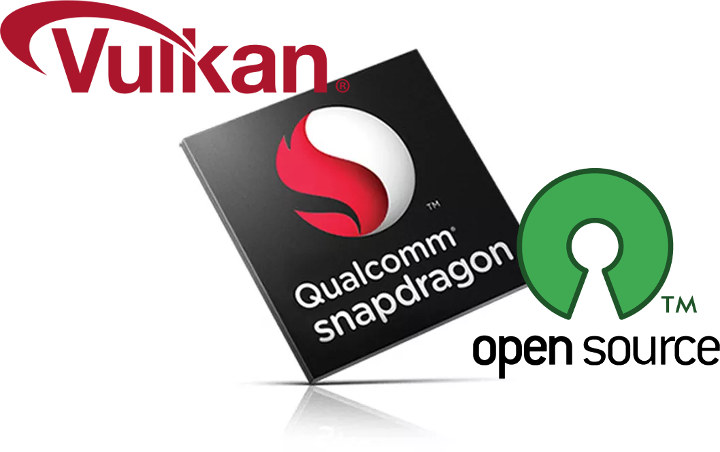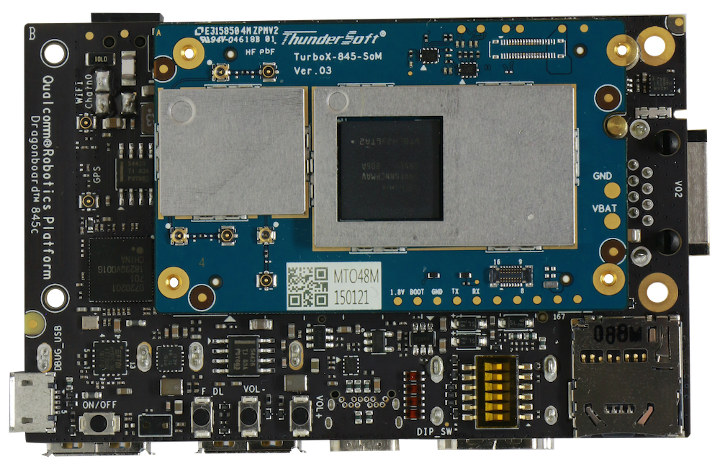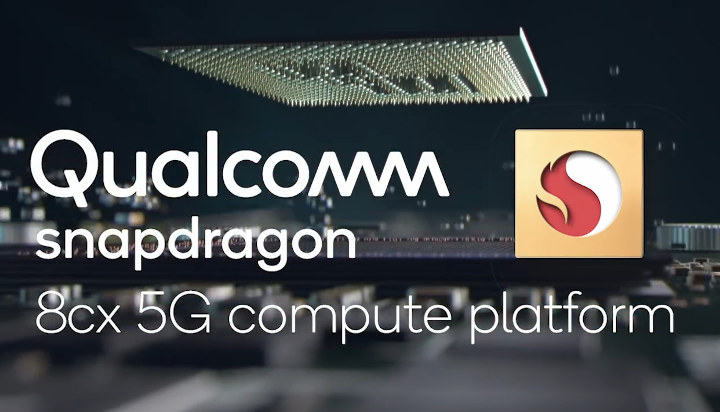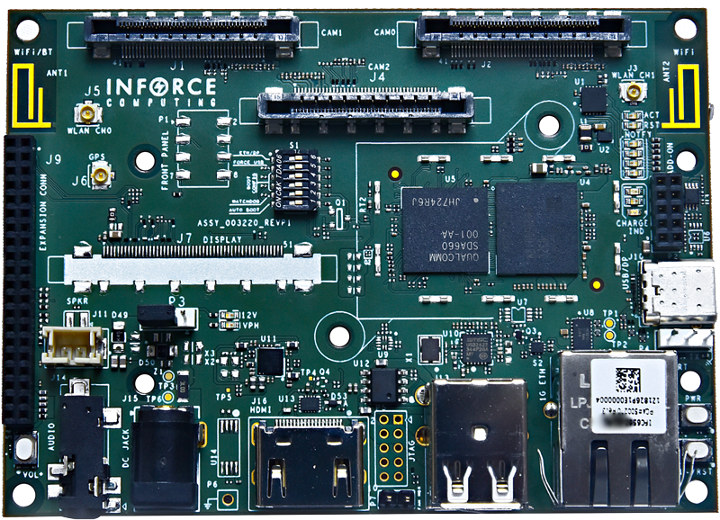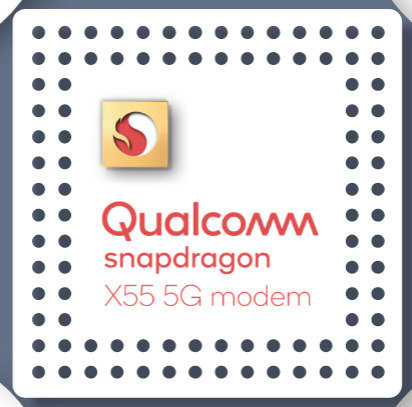Qualcomm Adreno GPUs have one of the best open source GPU driver for Arm SoC thanks to Freedreno driver. The driver relies on OpenGL ES API however, and nearly four of years ago, Khronos introduced the Vulkan API that aims to reduce CPU resources usage, and adds support multiple command buffers. The good news is there has been development of a Vulkan driver for Adreno 500 and 600 series GPU called Turnip, also referred to as Freedreno_vk (Freedreno Vulkan) in the code. The Turnip driver has been developed by Bas Nieuwenhuizen, a Site Reliability Engineer at Google who also happens to be RADV (Radeon Vulkan) lead developer, Chia-I Wu, a Google software engineer working on Android graphics, Chad Versace, Intel’s software engineer working on Linux OpenGL stack, and others as revealed by a recent merge into Mesa 19.1 slated to be released next quarter. Via Phoronix Jean-Luc Aufranc (CNXSoft)Jean-Luc started […]
Linux 5.0 Release – Main Changes, Arm, MIPS & RISC-V Architectures
Linus Torvalds has just released Linux 5.0: Ok, so the last week of the 5.0 release wasn’t entirely quiet, but it’s a lot smaller than rc8 was, and on the whole I’m happy that I delayed a week and did an rc8. It turns out that the actual patch that I talked about in the rc8 release wasn’t the worrisome bug I had thought: yes, we had an uninitialized variable, but the reason we hadn’t immediately noticed it due to a warning was that the way gcc works, the compiler had basically initialized it for us to the right value. So the same thing that caused not the lack of warning, also effectively meant that the fix was a no-op in practice. But hey, we had other bug fixes come in that actually did matter, and the uninitialized variable _could_ have been a problem with another compiler. Regardless – all […]
Qualcomm Robotics RB3 Development Platform is Powered by Snapdragon 845 SoC
[Update: The board is now known as “Qualcomm Robotics RB3 Development Platform” instead of DragonBoard 845c”, the rest of the article is unchanged] Qualcomm Snapdragon 845 is one of the fastest Arm processors found in consumer devices, and if you ever wanted a development platform with access to various I/Os, you’d have to go with fairly expensive kits (>$1,000) such as Intrinsyc Open-Q 845 HDK. The good news is that there’s now a cheaper Snapdragon 845 development board, compliant with 96Boards CE specifications, thanks to Thundercomm’s Robotics DragonBoard 845c that combines with processor with 4GB RAM, 64GB UFS storage, and the usual 96boards ports and expansion headers. Robotics DragonBoard 845c specifications: SoC – Qualcomm Snapdragon 845 with 8x custom 64-bit ARMv8 CPUs up to 2.8 GHz Adreno 630 GPU with support for OpenGL ES 3.2 + AEP, DX next, Vulkan 2, OpenCL 2.0 full profile, and RenderScript Hexagon 685 DSP […]
Snapdragon 8cx 5G Compute Platform Targets 5G always on, always connected PCs
Qualcomm announced Snapdragon 8cx processor for so-called always on, always connected mobile PCs in December 2018. The processor comes with eight Qualcomm Kryo 495 core, an Adreno 680 GPU with a 128-bit memory interface, NVME SSD, UFS 3.0 support, as well as a Snapdragon X24 4G LTE modem among other features. But the launch 5G cellular connectivity will start to (slowly) take off this year, so the company also revealed plans for Snapdragon 8cx 5G compute platform that brings the same processing power as 8cx processor but with an extra Snapdragon X55 5G modem. The company did not provide that many details about Snapdragon 8cx 5G in the press release, but we already know Snapdragon 8cx specifications as well as the key features of Snapdragon X55 2nd generation 5G modem, so we should already have a good idea about the platform. Qualcomm highlights the 7nm manufacturing process, multi-day battery life, and multi-gigabit […]
Inforce 6560 Snapdragon 660 Pico-ITX SBC Comes with 3 MIPI Camera Connectors
Inforce Computing has launched yet another Snapdragon-based single board computer with their Inforce 6560 SBC powered by Qualcomm Snapdragon 660 processor with stereoscopic depth sensing and deep learning capabilities made possible thanks to three MIPI camera connectors. The board also comes with to 3GB LPDDR4 RAM, 32GB flash, HDMI and MIPI DSI video outputs, Gigabit Ethernet, a wireless module, USB ports, sensors, and more. Inforce 6560 specifications: SoC – Qualcomm Snapdragon 660 (SDA660) with 8x Kryo ARMv8 compliant 64-bit CPUs arranged in two dual-clusters, running at 2.2GHz (Gold) and 1.8GHz (Silver) each, Adreno 512 GPU, Hexagon 680 DSP with dual-Hexagon vector processor (HVX-512) @ 787MHz for low-power audio and computer vision processing, Spectra 160 camera (dual) Image Signal Processors (ISPs) System Memory – 3GB onboard LPDDR4 RAM Storage – 32GB eMMC flash, 1x µSD card v3.0 socket Video Output / Display Interface HDMI V1.3a FullHD @ 60fps port 4-lane MIPI-DSI with […]
Samsung Galaxy S10, S10+, S10e, S10 5G Launched with Snapdragon 855 or Exynos 9820 SoC
Samsung officially launched the long awaited Galaxy S10 smartphone yesterday sporting either a Qualcomm Snapdragon 855 or Samsung Exynos 9820 processor coupled with 8GB RAM, 128 to 512GB storage, and a 6.1″ display. There are actually four variants of Galaxy S10, with S10+ model coming with up to 12GB RAM, 1TB flash storage, and a 6.4″ display, S10e phone with a smaller 5.8″ display, as low as 6GB RAM, and 128 to 256GB flash storage, and S10 5G with a 5G modem, a larger 6.7″ display, 6 cameras, and a larger 4,500 mAh battery. Many consider Samsung Galaxy phones to be the reference when it comes to Android phones, so let’s have a look at the technical specifications and features to see if there’s anything really new beside more processing power, and memory. Galaxy S10, S10+, S10e, and S10 5G phones share many of the same specifications: SoC (one or […]
Qualcomm Announces Snapdragon X55 Second Generation 5G Modem
Several 5G smartphones based on Snapdragon 855 processor and Snapdragon X50 5G modem have been announced, but AFAIK none have shipped to end users. But Qualcomm has already announced their second generation 5G NR (New Radio) modem with Snapdragon X55, which the company claims is “the world’s most advanced commercial multimode 5G modem”. Manufactured with a 7-nm process, Snapdragon X55 is a single-chip modem that supports 2G, 3G, 4G, and 5G NR mmWave and sub-6 GHz spectrum bands with up to 7 Gbps download speeds and 3 Gbps upload speeds over 5G, and up to 2.5 Gbps download speeds over LTE (Category 22) The model supports TDD and FDD modes, is capable of Standalone (SA) and non-standalone (NSA) network deployments, and can handle dynamic spectrum sharing delivering both 4G & 5G services dynamically. The Snapdragon X55 5G modem pairs with the new QTM525 5G mmWave antenna module, as well as […]
Xiaomi Mi A2 Review with Android 9.0 Pie
I had been using Xiaomi Mi A1 Android One smartphone since the end of 2017, and was mostly satisfied with it thanks to regular (monthly) firmware update, although I was a bit disappointed by the camera overtime. Eventually I had a serious issue with Mi A1’s eMMC flash, and stopped using it at the end of last year, or roughly after one year of service, since the phone became unusable, unbearably slow. Xiaomi Mi A2 and A2 Lite where released last summer, and having seen Mi A2 was getting an Android 9.0 firmware in Q4 2018, I asked GearBest whether they could send a sample to review the latest Xiaomi Android One phone. They accepted, and I posted the first part of the review in early December. However, at this time, I did not get the update, since it was not released in Thailand, but soon enough Xiaomi Mi A2 […]


